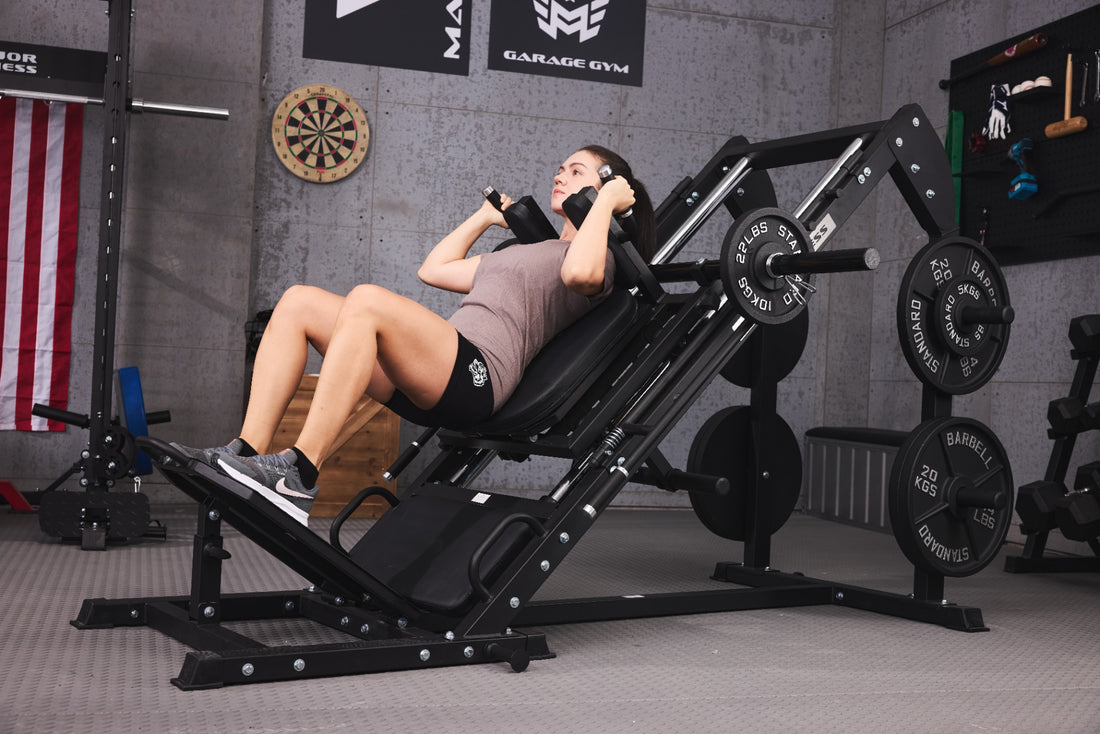
How to Use Leg Drive Bench Press is an essential skill for anyone looking to maximize their bench press performance and overall strength. This advanced technique isn’t just for powerlifters; it’s a game-changer for anyone who wants to lift more weight and enhance muscle development in the chest, shoulders, and triceps. In this comprehensive guide, we’ll break down the mechanics of leg drive in the bench press, explain the benefits, and provide step-by-step instructions, along with tips and tricks to master this incredible technique.
The Importance of Leg Drive in Bench Press
Many lifters focus primarily on their upper body when performing the bench press, but neglecting the lower body can be a significant mistake. Here's why leg drive is crucial:
- Increased Stability: Proper leg drive provides a solid foundation, making the lift more stable and controlled.
- More Power: By engaging the legs, you can generate more force, allowing you to lift heavier weights.
- Enhanced Muscle Recruitment: Leg drive helps activate additional muscle groups, promoting better overall muscle growth.
- Improved Form: A strong base reduces the risk of injury and encourages proper lifting technique.
Understanding the Mechanics of Leg Drive
Before diving into the practical steps, it’s essential to understand the biomechanics involved. Leg drive is the process of pushing your feet into the ground to create tension throughout your body. This tension translates to the barbell, enabling you to lift more effectively.
Positioning Your Feet
The first step is to ensure proper foot positioning:
- Flat Feet: Place your feet flat on the ground, roughly shoulder-width apart. Ensure they are either tucked back towards your hips or positioned directly under your knees, depending on comfort and mobility.
- Heel Drive: Some lifters prefer driving through their heels rather than toes. Try both methods to see which feels more powerful and stable to you.
Engaging Your Lower Body
Once your feet are positioned correctly, the next step is engaging your lower body:
- Tense Your Legs: Actively tense your quads, glutes, and calves. This engagement should create a rigid tension throughout your legs.
- Drive Your Feet: Push your feet down and slightly forward into the ground as if you’re trying to slide the ground beneath you.
This action will transfer energy from your legs, through your core, and into the bar, ultimately aiding in the lift.
Step-by-Step Guide to Implementing Leg Drive
Now, let’s break down the bench press with integrated leg drive step-by-step:
- Set Up the Bench: Ensure the bench is stable and at the correct height. Adjust the barbell position if necessary.
- Position Your Feet: As described above, place your feet flat on the ground where they provide maximum stability and leverage.
- Arch Your Back: A slight natural arch in your lower back is necessary. This allows your chest to rise and reduces the range of motion, making the lift more efficient.
- Grip the Bar: Grasp the barbell firmly, either with a standard or wide grip, depending on what feels most comfortable and safe.
- Unrack the Bar: Lift the barbell off the rack and position it above your chest.
- Engage Your Legs: Before lowering the bar, engage your legs by driving your feet into the ground.
- Lower the Bar: With control, lower the bar to your chest while maintaining the leg drive. Keep the tension throughout your body.
- Press the Bar Up: As you push the bar back up, continue to drive through your legs. This will help push the bar back to the starting position explosively.
- Repeat: Continue the process for the desired number of repetitions, ensuring leg drive is maintained throughout.

Common Mistakes and How to Avoid Them
Despite its benefits, improper execution of leg drive can hinder your performance and lead to injury. Here are some common mistakes and how to avoid them:
- Improper Foot Position: Ensure your feet are neither too far away nor too close to the bench. Adjust as necessary.
- Lack of Tension: Always keep your legs tense and engaged. Relaxing them can result in lost power and stability.
- Inconsistent Drive: Maintain consistent leg drive throughout the entire lift, from lowering the bar to pressing it up.
- Overarching Back: While a slight arch is beneficial, overdoing it can strain your lower back. Find a balanced arch that works for you.
Advanced Tips and Tricks
For those looking to take their leg drive to the next level, consider these advanced tips:
- Practice Without Weight: Rehearse the leg drive technique without adding weight to the bar to perfect your form.
- Focus on Core Strength: A strong core enhances the transfer of power from your legs to the bar. Include core exercises in your routine.
- Use a Box: Placing a small box under your feet can help you learn the feeling of driving through your feet effectively.
- Video Analysis: Recording your lifts can help you identify and correct form issues.
Benefits Beyond the Bench Press
Learning how to use leg drive bench press doesn't just improve your bench press performance; it also translates to other lifts and athletic activities. Enhanced lower body engagement and core stability positively impact squats, deadlifts, and overall athletic performance.
Moreover, mastering this technique can reduce the risk of upper body injuries by promoting better form and distributing the load more evenly.
Conclusion
Knowing how to use leg drive bench press can significantly elevate your lifting game and offer numerous benefits beyond just the bench press. With a solid understanding of the mechanics, proper setup, and consistent practice, you can maximize your strength and achieve your fitness goals. Whether you're a novice lifter or an experienced athlete, this technique is a valuable addition to your training arsenal. Start incorporating leg drive into your bench press today and experience the difference it can make!





















